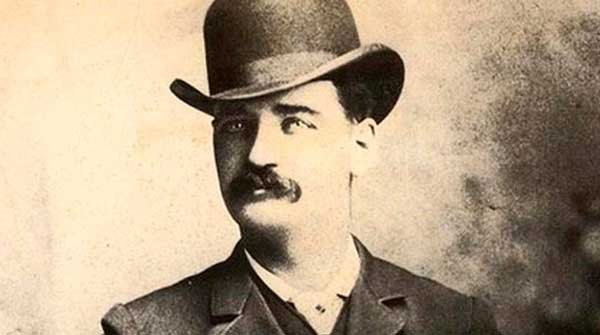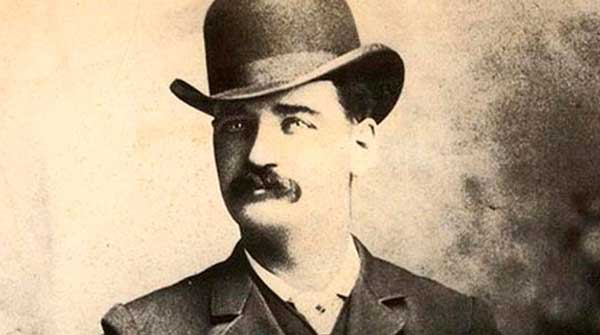Born in Quebec, Bat Masterson set out to find adventure on America’s frontier – and he found plenty

It was through the cinema of my childhood that I first heard of Bat Masterson. But it wasn’t until I read Tom Clavin’s book, Dodge City, that I realized Masterson was Canadian.
Or at least he was by birth.
Masterson entered this world in Henryville, Que., on Nov. 26, 1853, as the second of what was to be seven children in a family of predominantly Irish background. His father’s side had been in North America for several generations, but his mother, Catherine McGurk, was born in Ireland.
If the family once had status – there seems to be a Sir Thomas Masterson in the genealogical tree – by the mid-19th century they were ordinary farmers. And it was as such that they moved from Quebec to New York to Illinois to Missouri and eventually to Kansas.
 |
| Related Stories |
| When Buffalo Bill took London by storm
|
| Wild Bunch showed True Grit in demythologizing the Old West
|
| A true story that inspired a classic western movie
|
Temperamentally, though, young Masterson wasn’t suited for life on the family farm. So setting out to explore what was available to a young man on the 1870s frontier, he initially worked as a buffalo hunter and U.S. Army scout.
And there was plenty of adventure, including participation in 1874’s Second Battle of Adobe Walls and a role in the rescue of four young white girls who’d been kidnapped by a Cheyenne raiding party. In addition, a fatal gunfight over the affections of a young prostitute left him with a permanent limp, hence the walking stick that became associated with the later legend.
That legend derives from Masterson’s days as a Dodge City, Kan., lawman. Between 1876 and 1883, he worked on and off with the famous Wyatt Earp, acquiring a reputation that lent itself to subsequent embellishment from newspapers, magazines, dime novels, movies and television. And although opposites in personality – Earp was taciturn and largely abstained, whereas Masterson was gregariously charming and fond of a tipple – the pair formed a bond.
Dodge City’s boom had two primary contributors. One was the arrival of the railroad in September 1872, and the other was Kansas legislation that squeezed out Dodge’s competition by restricting the movement of Texas longhorn cattle to the western part of the state. Thus, for a decade beginning in the mid-1870s, Dodge became the premier cowtown on the frontier. And along with the money, this brought problems.
After weeks on a hot, dusty trail herding cattle from as far south as the Rio Grande, the cowboys had money in their pockets, a yen for a rip-roaring time and a marked shortage of good manners. Somebody had to keep them in line, which is where the Earp-Masterson duo came in.
Clavin’s book provides several interesting vignettes of Dodge life. I’m fond of this one: “It was reported in 1879 that there were 700 residents, 14 saloons, two dance halls, and four dozen prostitutes.” That, I think, says it all.
Earp and Masterson both went on to live long post-lawman lives, Masterson until 1921 and Earp until 1929. And both moved far from Dodge, with Earp settling in Los Angeles and Masterson in New York City. But while Earp was pinched for money in his later years, Masterson ultimately found a rewarding new groove.
After post-Dodge adventures as a gambler, saloon keeper and boxing promoter, Masterson moved to New York City in the summer of 1902. There he parlayed his convivial personality, reputation and past friendships into a job as sports editor for The Morning Telegraph and proceeded to build a new life as a celebrity journalist and man-about-town. Clavin estimates that, by the time of his October 1921 death from a heart attack, the column Masterson’s Views on Timely Topics had generated at least four million words.
There was more.
Thanks to the entertainment industry’s early-to-mid-20th century fascination with the Old West, Masterson’s legend went around the track a few more times. There was even a 1958 to 1961 television series, with a dapper Gene Barry playing the title character in 108 episodes of NBC’s Bat Masterson.
By then, the stories had graduated from embellishment to pure fiction, but one suspects Masterson would have enjoyed them. Along with his courage and enterprise, he perhaps had the soul of a con man.
In a life exuberantly lived, there was rarely a dull moment.
Troy Media columnist Pat Murphy casts a history buff’s eye at the goings-on in our world. Never cynical – well, perhaps a little bit.
For interview requests, click here.
The opinions expressed by our columnists and contributors are theirs alone and do not inherently or expressly reflect the views of our publication.
© Troy Media
Troy Media is an editorial content provider to media outlets and its own hosted community news outlets across Canada.

